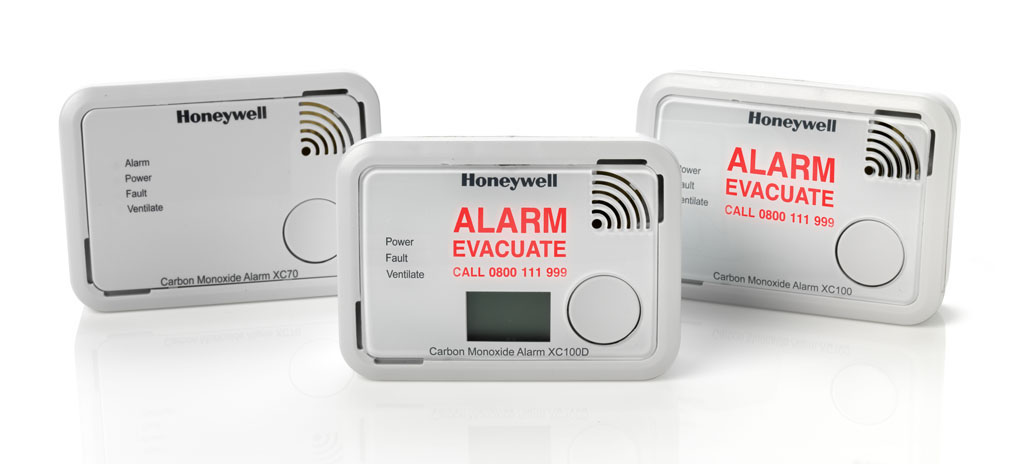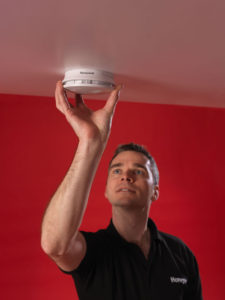
To mark Carbon Monoxide Awareness Week 2016, Adrian Keats at Honeywell’s Home Safety business offers his top tips on specifying carbon monoxide (CO) alarms and where to site them for the highest level of safety.
CO poisoning is a serious issue. It is estimated that over 4,000 people per year are diagnosed by A&E as having been poisoned by carbon monoxide1, a figure which experts believe is likely to be far lower than the reality, as many cases go undetected. With this in mind, it’s crucial to be mindful of CO safety when specifying for housing developments — be they public or private sector — and to provide sufficient defence against the dangers of carbon monoxide.
As we enter CO Awareness week (21st -27th November), we’ve put together the below top tips for CO alarm recommendations and siting guidance.
Go beyond legislation
To remain compliant with the law, landlords in England and Wales must ensure that a carbon monoxide alarm is fitted in every room featuring a solid fuel burning appliance. But, in terms of ensuring tenant safety, this is the bare minimum. Many incidents of CO poisoning are the result of gas leaks from incorrectly fitted, inadequately maintained or faulty appliances like boilers and cookers, none of which are covered by the legislation.
For complete protection, a CO alarm should be placed in every room which contains a fuel burning appliance, as well as an alarm in any bedrooms located above these.
Whilst this level of caution may seem excessive, recent figures have shown that incidents of CO poisoning are on the rise, with a 10% increase in suspected cases over the last two years. Furthermore, a 20% rise has been identified amongst children as well as a 17% rise amongst those aged 60 and over, which highlights the crucial nature of carbon monoxide safety.2
Siting
Once the amount of CO alarms necessary for a property has been determined, it’s crucial to consider alarm location. Detailed recommendations can be found in EN50292, a guide on selection, installation, use and maintenance for residential carbon monoxide alarms, but ideally, the alarm should be positioned high up in the room typically 30cm from the ceiling, and a metre away from boilers, fires, cookers or heaters. It can be fixed to a wall or free-standing on a shelf, as long as the recommended positioning requirements are met.
 Maintenance
Maintenance
Once the alarm is fitted, should it develop a fault or expire then it remains the responsibility of the property manager to have it repaired or replaced. Depending on the model selected, the lifespan of the alarm can vary, and maintenance for mains wired and battery powered alarms may be different. The Honeywell X-Series CO, smoke and heat alarms require no additional maintenance and no parts or batteries to replace for the entirety of their operational life, fully guaranteed — as a result, maintenance costs to the property owner are minimal.
Connected systems
For the greatest level of security, managers are increasingly looking to connected alarm systems when specifying for developments. These connect smoke, heat and CO alarms throughout the home for comprehensive defence against both gas and fire risks.
The key benefit of these systems is that they alert residents to any hazard, no matter where they are in the property. The resident is then able to ascertain which alarm has been triggered, as whilst each alarm will be issuing an audible alert, only the alarm that has sensed the danger will offer a visual indication. This is especially relevant when it comes to blocks of flats and houses of multiple occupancy (HMOs) as it means the entire community can be warned, no matter where a hazard develops.
CO Awareness Week is the ideal opportunity to brush up on your CO knowledge and bear in mind the above tips to ensure you provide a safe and reliable CO alarm system for tenants.
1http://www.policyconnect.org.uk/appcog/sites/site_appcog/files/report/329/fieldreportdownload/preventingcopoisoningreport.pdf
2 http://www.cambridge-news.co.uk/major-rise-in-number-of-children-at-risk-of-carbon-monoxide-poisoning-in-cambridgeshire-says-study/story-29696919-detail/story.html
3 https://www.actiononhearingloss.org.uk/your-hearing/about-deafness-and-hearing-loss/statistics.aspx








